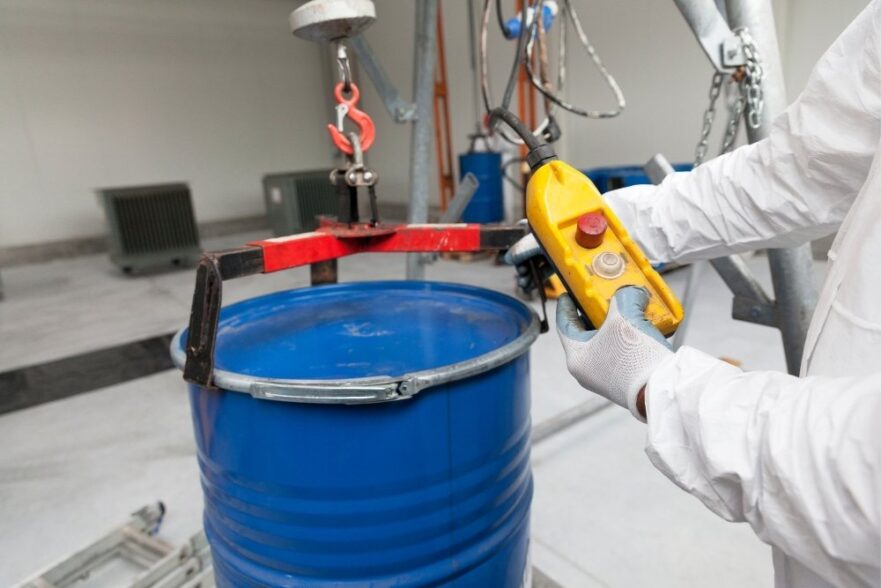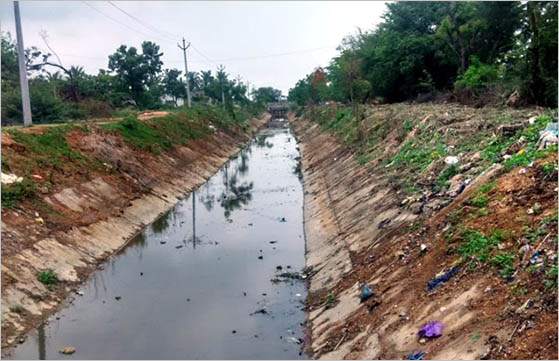Just How Liquid Waste Disposal Functions: A Thorough Review of Methods and Technologies Used

Summary of Liquid Waste Kind
The intricacy of liquid waste types requires a complete understanding of their characteristics and effects for disposal. Fluid waste can extensively be categorized into numerous types, including industrial, community, agricultural, and contaminated materials. Each category exhibits distinctive homes, needing particular administration methods to alleviate environmental and health risks.
Industrial fluid waste stems from making processes and typically includes a series of impurities, such as hefty steels, solvents, and organic compounds. Metropolitan fluid waste, mainly making up wastewater from homes and commercial facilities, includes organic issue, nutrients, and microorganisms (industrial wastewater treatment). Agricultural liquid waste, consisting of overflow from farms, might consist of fertilizers, chemicals, and animal waste, posing threats to water high quality and environments
Unsafe liquid waste is defined by its poisoning, sensitivity, or potential to trigger injury. Understanding these diverse fluid waste kinds is critical for developing efficient disposal approaches and ensuring compliance with environmental policies.
Physical Therapy Approaches

Testing is the first step, where larger bits and particles are eliminated from the liquid waste utilizing displays or grates. In sedimentation containers, heavier bits settle at the bottom, developing a sludge layer, while the cleared up fluid can be additional dealt with.
Filtering is another vital technique that includes passing the liquid via permeable materials, such as sand or membranes, to record smaller particles. This action enhances the quality of the fluid, making it appropriate for subsequent therapy processes.

Chemical Therapy Techniques
Chemical therapy techniques are crucial for successfully taking care of fluid waste, particularly in resolving dissolved and colloidal impurities that physical methods may not properly get rid of. These techniques use numerous chemical agents to reduce the effects of, speed up, or transform harmful substances into much less harmful kinds.
One typical approach is coagulation and flocculation, where chemicals such as alum or ferric chloride are included in promote the gathering of put on hold particles. This process improves sedimentation, permitting easier elimination of the resulting sludge. In addition, oxidation processes, using agents like chlorine or ozone, are utilized to damage down intricate natural compounds and pathogens, making the waste safer for discharge or more treatment.
Neutralization is one more essential strategy, which readjusts the pH try this website of acidic or alkaline waste streams to neutral degrees, protecting against potential harm to downstream systems and the atmosphere. In addition, progressed oxidation procedures (AOPs) utilize combinations of oxidants and ultraviolet light to deteriorate relentless contaminants, accomplishing a greater degree of therapy performance.
Biological Treatment Procedures
Organic therapy procedures play a crucial duty in the management of fluid waste by making use of microbes to decompose organic matter and reduce contaminant levels. These procedures can be generally classified right into anaerobic and aerobic treatments, each employing specific microbial areas to attain efficient waste degradation.
Aerobic treatment entails making use of oxygen to assist in the malfunction of natural products by microorganisms. This procedure is frequently executed in activated sludge systems, where oygenation tanks provide a conducive setting for microbial growth, resulting in the oxidation of organic toxins. The resultant biomass can be separated from treated effluent via sedimentation.
On the other hand, anaerobic treatment occurs in the lack of oxygen, depending on various germs to break down natural matter. This approach is especially advantageous for high-strength waste, as it generates biogas, a renewable resource resource, while decreasing sludge manufacturing. Technologies such as anaerobic digesters are regularly employed in metropolitan and industrial applications.
Both aerobic and anaerobic biological treatments not only minimize the ecological effect of fluid waste however also assist in resource healing, making them essential parts of sustainable waste monitoring strategies. Their effectiveness, performance, and adaptability sustain their widespread application throughout different fields.
Arising Technologies in Disposal
Cutting-edge approaches to fluid garbage disposal are rapidly progressing, driven by advancements in innovation and an increasing emphasis on sustainability. Among these emerging innovations, membrane layer bioreactors (MBRs) have actually gotten grip for their ability to incorporate biological therapy with membrane layer purification, causing top notch effluent that can be recycled in various applications. MBRs enable smaller sized footprints and more effective operations compared to conventional systems.
Another appealing advancement is making use of anaerobic food digestion integrated with nutrient healing modern technologies, which not only deals with liquid waste but also produces biogas and recoups important nutrients like nitrogen and phosphorus. This double advantage boosts source effectiveness and decreases ecological impact.
Additionally, progressed oxidation processes (AOPs) are being adopted for the degradation of complex natural contaminants. These methods utilize effective oxidants and stimulants to damage down pollutants at the molecular level, providing a highly efficient option for difficult waste streams.
Furthermore, the integration of expert system and device knowing in waste management systems is maximizing operational efficiency and anticipating upkeep, causing decreased prices and improved environmental compliance. These technologies mirror a considerable shift in the direction of more efficient and sustainable fluid waste disposal techniques.
Final Thought
In have a peek at this website final thought, effective fluid waste try these out disposal necessitates a thorough understanding of different strategies and technologies. By continuously advancing these methods, it becomes possible to deal with the expanding obstacles associated with liquid waste, inevitably contributing to environmental security and resource recuperation.
Liquid waste disposal is an important element of ecological monitoring, calling for a comprehensive understanding of various techniques and technologies tailored to different waste types. Liquid waste can extensively be categorized into numerous types, including commercial, community, agricultural, and hazardous waste. Agricultural liquid waste, including runoff from farms, may contain fertilizers, chemicals, and animal waste, posing dangers to water high quality and ecosystems.
Various physical therapy methods play an essential role in handling liquid waste efficiently - industrial wastewater treatment.In verdict, reliable fluid waste disposal requires a detailed understanding of different methods and innovations